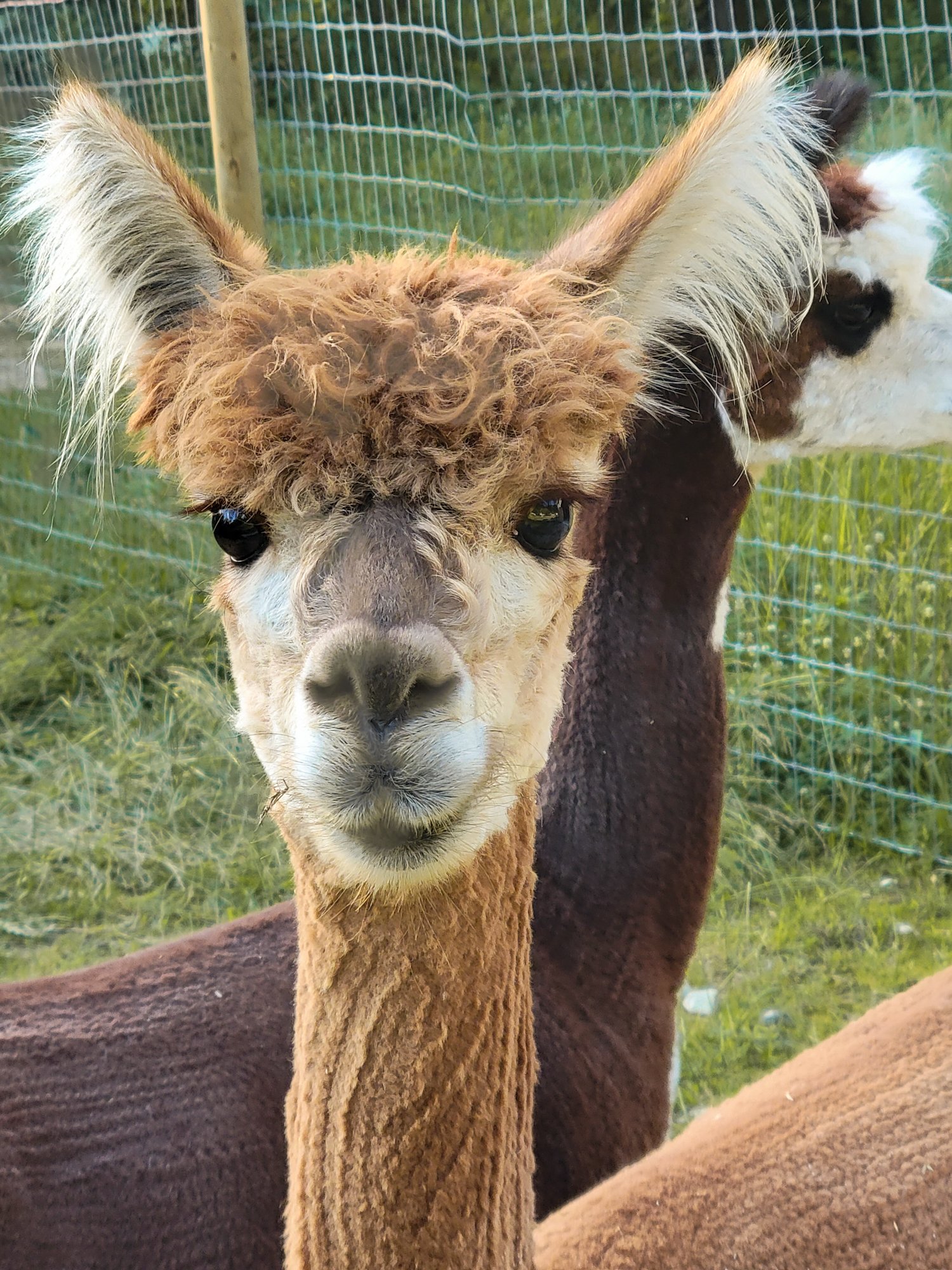All About Alpacas
What’s the big deal with alpaca fiber?
Alpaca fiber is softer, stronger and warmer than sheep’s wool. It is also naturally moisture and fire resistant; comes in 22 colors and contains no lanolin.
Are llamas and alpacas the same?
Alpacas and llamas are both part of the camelid family but have big differences. Llamas weigh over 400 lbs and the average alpaca is 150 lbs. Llamas are typically used as guardian or pack animals. Alpacas have soft fleece and their fiber is used for textiles.
Do alpacas spit?
Alpacas do spit as a way to communicate with one another. An alpaca will spit if annoyed, threatened, or fighting.
Spitting also help us assess if an alpaca is pregnant. A female alpaca will spit at a male alpaca if she is pregnant and not interested in breeding. This “spit test” is very accurate and commonly used to test the status of a pregnancy.
How long does an alpaca live?
Alpacas live 15-20 years on average; though the oldest known alpaca was 28 years old.
Do alpacas make noise?
Alpaca’s make many different noises but mostly communicate nonverbally.
The most common sounds are:
Humming: It is used to communicate between a mother and cria (baby), and between members of a herd. There are many different types of hums to communicate their feelings, just like the cries of a child.
Orgling: This sound is made by the male alpaca during mating and to attract a mate. It is a very unusual sound and there are many videos on the web of their vocalizations.
Shrill “alarm call”: It is a high pitched sound used to notify the herd of something suspicious such as a predator or something unfamiliar. Our boys often alert us to our neighbor’s dog taking a stroll.
How much does an alpaca cost?
Alpacas can range in cost from $0 to $500,000. That range may seem too broad of an answer and that’s because there are many factors to determine the price of an alpaca. The quality of the animal in conformation and fiber, and the lineage of the animal impact the price someone may pay. Most pet quality animals are priced under $1,000 but show quality animals can be as much as $40,000. A high quality breeding male could be over $60,000.
How often do you shear an alpaca?
Alpacas are shorn once a year in the spring. Between 5 and 10 pounds of fiber is harvested from each alpaca every year.
Does shearing hurt the alpaca?
No. Though some alpacas make noise during the shearing process, they are not being injured. It is much like getting a haircut and they are secured by professionals to make sure they are not cut during the process. On average, an alpaca can be shorn in 6 minutes.
Shearing is essential for the alpaca’s health. Even if the fiber is not being used, an alpaca needs to be shorn every spring to ensure that they don’t overheat as the weather changes. Wearing a 7lb warm coat in summer could endanger an alpaca’s health and wellbeing.
Listen to an Alpaca hum for her mom.
What do alpacas eat?
An alpaca’s main source of nutrition is from hay and one should have access to it at all times. They consume about 2 pounds of hay per 125 lbs of body weight or 1.5 % of their body weight daily. Our alpaca’s prefer soft orchard grass hay. Their also have access to quality mineral supplements. Some alpaca owners also provide pellet supplements as part of their diet.
Can alpacas have treats?
There are many treats that are safe for alpacas to eat, but we ask the public not to feed our alpacas treats. We utilize treats for positive reinforcement and no longer offer feeding the animals to the public.






